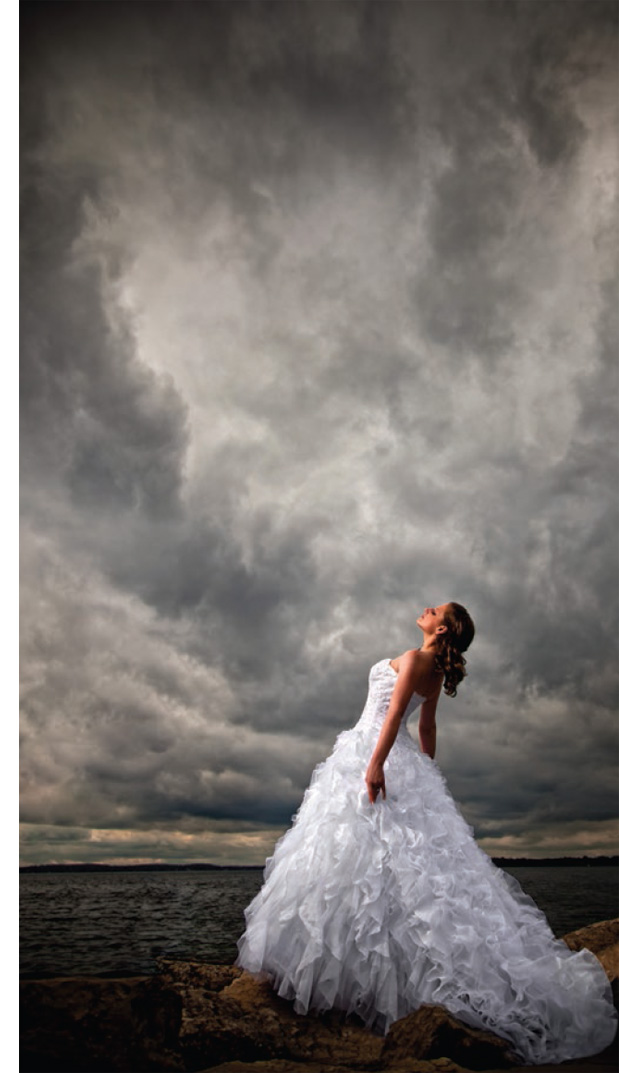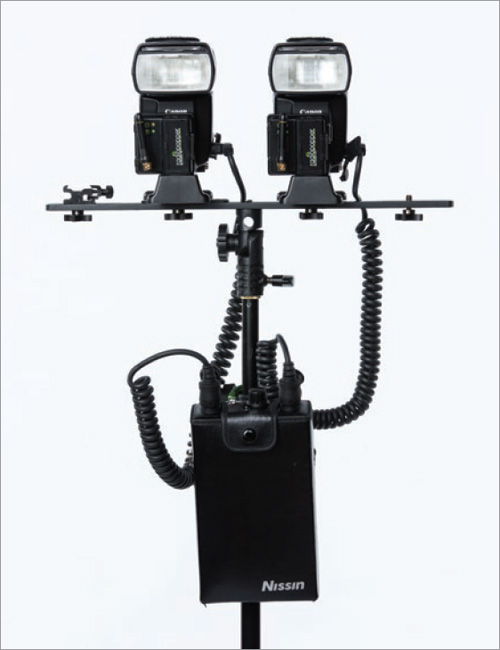Photographer: Michael Mowbray
For wedding and portrait photographer Michael Mowbray, one of the major advantages of a speedlight portrait system is the ability to create the light he wants just about anywhere. “That opens up so many possibilities,” he says. “There’s no more, ‘That would be a great spot but the light is blah.’ I spice it up with some speedlights and create my own interesting light. Likewise, there’s no more, ‘That would be an awesome spot, but the sun is too bright.’ I simply mix in some speedlights in high-speed sync (HSS) mode and tame the sun.”

A pair of speedlights in HSS lit the bride; they were held out on a light stand to camera left by Michael’s assistant. Michael shot from a very low angle, adding on-camera fill flash to open up detail on the dress.
How It Works
Switching to high-speed sync causes your speedlight to function, essentially, as a continuous light source. Rather than a single burst of light, the speedlight emits pulses that illuminate the entire frame as the gap between the front and rear curtains of the shutter passes in front of the sensor. This means you are not constrained to shooting at or below the camera’s flash sync speed—which, in turn, means you can use a wide-open aperture (and the corresponding short shutter speeds) to achieve a shallow depth of field.
Double Up for More Power
“The trade-off,” says Michael, “is that the HSS pulsing robs a lot of power from the flash, so you need to work with the flash very close to your subject (the closer the better) or you need to double up speedlights in order to compensate for the power loss. This is the option I typically choose.”

Ganging up the speedlights helps compensate for the loss of power when shooting in HSS mode.
“My on-camera flash fired low to fill the lower half of the scene,” says Michael. “My two off-camera speedlights were ganged together from above and tipped down to provide nice light on the couple’s faces. All of the flashes were in high-speed sync (HSS) eTTL to maintain the exposure of the sky while keeping a more shallow depth of field.”
The Flash/Ambient Exposure
“In practice, I fire a quick test shot and then adjust the exposure compensation and flash exposure compensation to taste. As a general rule, I try not to turn down the exposure compensation to more than–1⅓ EV. Once I go below that point, the ambient light seems just to ‘disappear,’” says Michael.
Of course, that’s a tool you can also use to your advantage. For the image to the right, Michael wanted a moodier look that gave viewers a voyeuristic sense of catching the couple in a private moment. “Even though we were in the shade of the capitol building, it was still broad daylight in a public place,” he says. “In order to enhance the sense of intimacy, I choked down the ambient light to create the base mood of the image, and then used off-camera speedlights in HSS to carve out my desired mood lighting on the couple. This helped to minimize the public setting and to isolate the subjects so that the focus stayed on them.”
